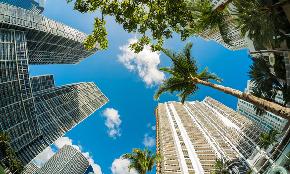 According to Greg Masin, senior director of Cushman & Wakefield’s South Florida retail team, this district is in the midst of a rapid transition.
According to Greg Masin, senior director of Cushman & Wakefield’s South Florida retail team, this district is in the midst of a rapid transition.
MIAMI—Dozens of edgy new retail districts are emerging across America—and Miami is home to one of them. These new districts are attracting urban, experiential and independent mid-market retailers targeting Millennial consumers.
Cushman & Wakefield highlights them in a new report called Cool Streets of North America. Some of the districts are well-known to retailers, unconventional new retail concepts are emerging on lesser known streets.
Wynwood represents Miami. Also in the top 15 are: Sunset Park in Brooklyn; Logan Square in Chicago; Over-the-Rhine in Cincinnati; RiNo in Denver; Silver Lake in Los Angeles; North Loop in Minneapolis; Roosevelt Row in Phoenix; Carytown in Richmond, Va.; East Village in San Diego; Jackson Square in San Francisco; Delmar Loop in St. Louis; West Queen West in Toronto; Mount Pleasant/Main in Vancouver; and Shaw in Washington, D.C.
According to Greg Masin, senior director of Cushman & Wakefield’s South Florida retail team, Miami’s Wynwood district is in the midst of a rapid transition. He points to the rise of pedestrian traffic and a soon-to-be-announced exit off of Interstate 95 at 29th Street will enhance access and further drive traffic.
“The next wave of food and beverage offerings has already arrived and the soft goods co-tenancy of retailers like Warby, Shinola, and Illesteva has deepened,” Masin tells GlobeSt.com. “Rental rates continue to rise and competition among owners for additional acquisitions remains stiff.
“Despite rising rents, the availability of efficient spaces and growing pedestrian traffic will maintain the cool for the moment. Office users seeking creative work environs continue to keep Wynwood near the top of their list. All that’s needed to further cement the relevance of the trade area is the delivery of a material residential component.”
In an age of increasing retail uncertainty, Garrick Brown, vice president of Retail Research at CushWake, tells GlobeSt.com these cool streets serve as a kind of incubator for what will likely be the hottest new retail concepts of the future. Preferences for urban over suburban living and for experiences over material goods are at the heart of the Cool Streets trend.
“If retailers live and die by cool, the same also holds true of retail properties, shopping centers and entire neighborhoods,” says Brown. “And in an age of frugality, e-commerce encroachment and vast gaps in shopping center performance, cool matters now more than ever. The mandate is and has been to reduce portfolios to only the class A or trophy locations with the highest sales. However, class A landlords know this, and many are aggressively raising rents. This situation may force many traditional mall tenants to rethink their real estate strategies and begin looking for creative alternatives. Cool Streets will be one of them.”
So what’s next for the Cool Streets? Many of them are in transition, the report notes, and their rising popularity very well could bring a new wave of tenants that weakens the areas’ roles as incubators. The report predicts that in the months and years to come, more mainstream retailers—particularly beleaguered mall apparel concepts facing Wall Street pressure to “right-size”—will begin searching for shop space in these up-and-coming districts.

















 Copyright © 2024 ALM Global, LLC. All Rights Reserved.
Copyright © 2024 ALM Global, LLC. All Rights Reserved.